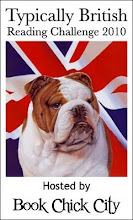 Dracula
DraculaBy: Bram Stoker
448 pages
Published: 1897
ISBN: 159308160X
My Copy: A Christmas gift from a few years back
A bestseller in its day, Dracula tells the story of a group of Englishmen who attempt to stop the bloodthirsty Count as he stalks and attacks his victims throughout London. Most everyone probably knows the plot of Dracula. Certainly I did. But that did not make reading it one bit less enjoyable. In fact, the book is really good. Really, really good. I got through it in about two days (which is saying a lot for me lately).
I can easily see why Dracula was as popular as it was in Victorian England. The suspense and horror are so perfectly done, the terrifying scenes are beautifully set, and the love stories are moving. It is especially important to note that much of the now-corny vampire lore created by Stoker (vampires as bats, aversion to garlic and crosses, stakes through the heart, castles in Transylvania), was new to the reader at the time. Dracula certainly owes a debt to Carmilla and The Vampyre, but all vampire fiction, right up through Twilight owes its entire existence to Dracula.
Speaking of Twilight, people tend to criticize the fact that Bella Swan has so many men fawning all over her (a valid criticism, I would say). But look at Lucy Westenra, who has not just two, but three men falling all over themselves, proposing marriage to her, and offering to die for her. Not to mention that she is hunted by the evil Count Dracula so that he might turn her into one of his beautiful undead companions. Take that, Bella!
The form of the novel is also slightly different. It is told in the epistolary form and is woven together with mastery. The various letters, journal entries, and newspaper clippings collected in the novel serve their purpose - to provide us with a pieced together narrative that allows us to solve the mystery of Dracula along with its characters. I find that I often have trouble with epistolary novels, but this one seemed to fit the form perfectly (though I did feel badly that everyone had to keep taking notes after witnessing such horrifying events, especially towards the end). It reminded me of the format of Carrie, which took the form of newspaper clippings, magazine articles, letters, and excerpts from books to piece together the events leading up to the novel's climax.
The tone of the novel also helped me understand Jane Austen a bit better (though, of course, she died 80 years before it was published). Many of the Gothic conventions she mocks in Northanger Abbey are alive and well in Dracula (one example: the instant friendships formed between any previously unacquainted main characters reminded me of Isabella Thorpe's hastily formed best-friendship with Catherine Moreland). Oh, and the swooning, the crying, the fainting fits - it seemed like something Maryanne Dashwood would positively adore.
But I adore it, too! And sensible as Jane Austen was, she loved these types of books as well (though she realized them for the escape and fantasy that they were). I think, like Jane, I just love 16th and 17th century Gothic fiction. I don't think there's any other answer. That and this book was awesome. I would heartily recommend it to any fan of horror or vampire fiction or just anyone who loves a good, spooky read.
Rating: B+








No comments:
Post a Comment